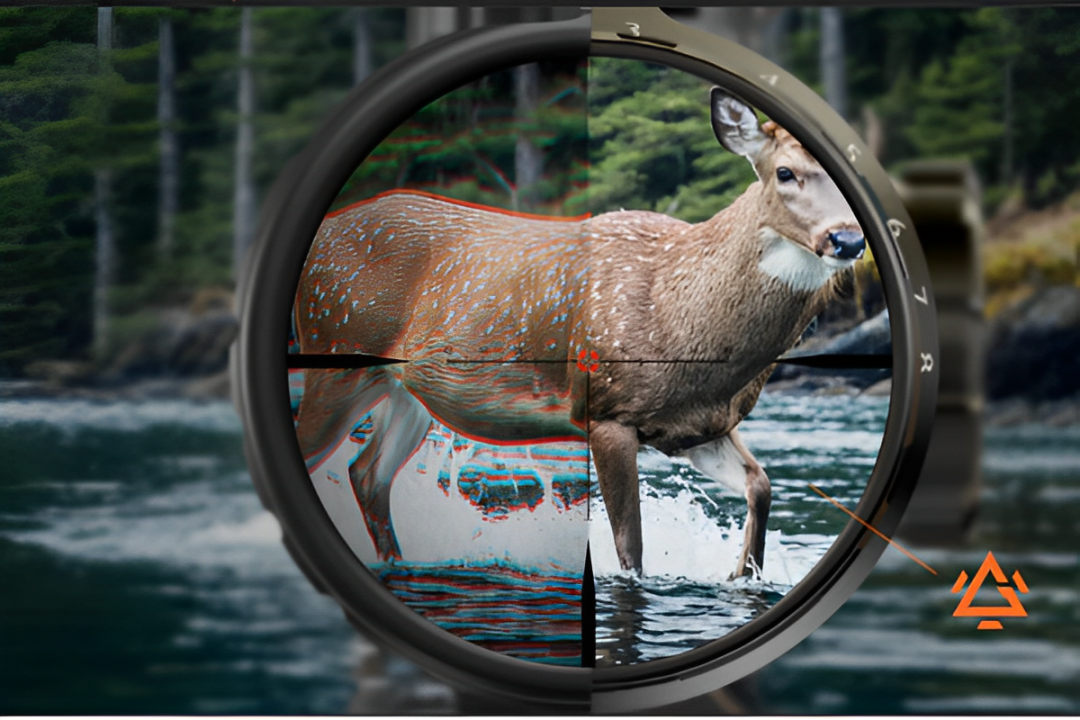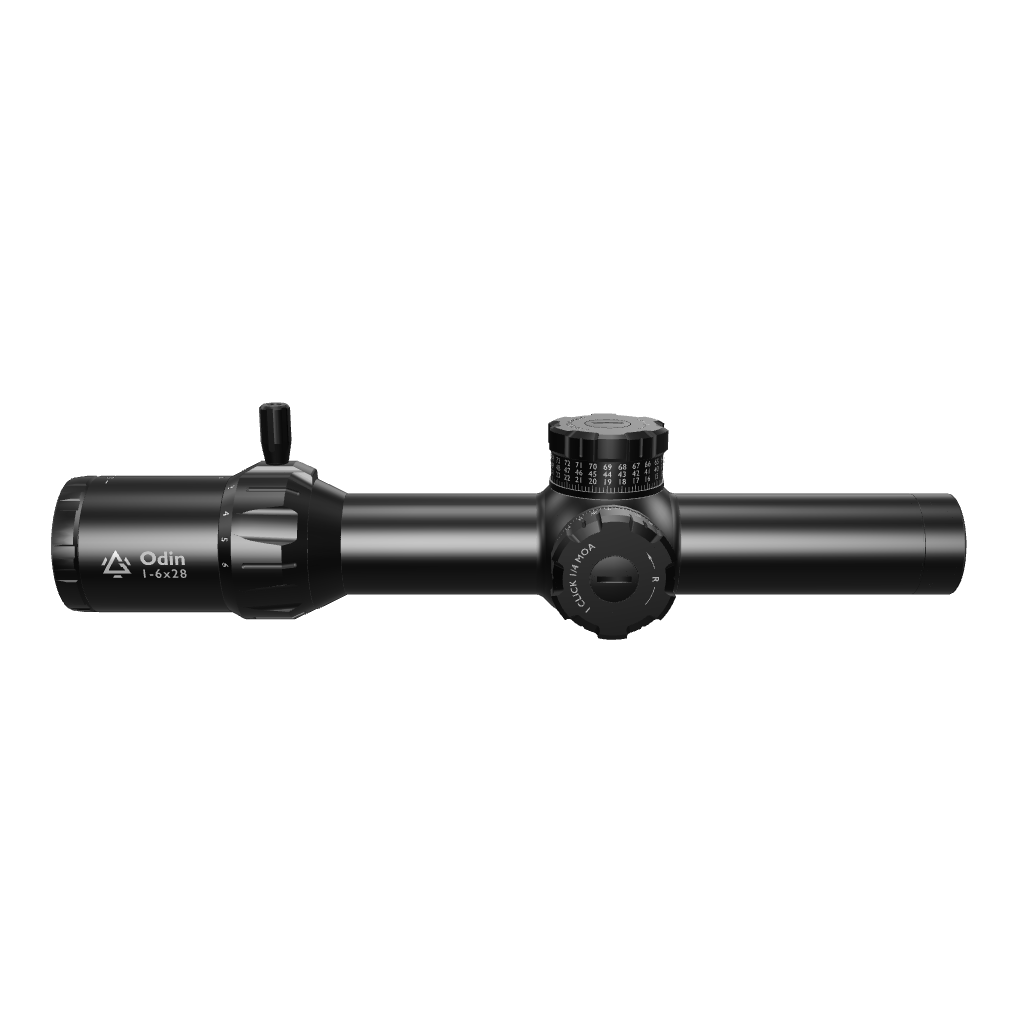5 Ways You Can Use an LPVO as a Hunting Scope
When many people think of hunting scopes, an LPVO is not the first thing that comes to mind. Traditional hunting scopes usually include fixed-power scopes and other kinds of high-magnification scopes. LPVOs, at their core, are not hunting scopes.
However, a modern LPVO, especially an FFP LPVO, offers a unique blend of practical features that can be a game changer for hunting; it all depends on what, where, and how you hunt.
If you are an LPVO looking to get into hunting, you might not need to buy a new (and often more expensive optic. Depending on what you intend to hunt and where, you just might be able to head out with your LPVO and have as much success as you could have had with a traditional hunting rifle.
Here are five scenarios where an LPVO would excel as a hunting scope, what their pros and cons are, and whether they're a good match for your next trip into the field.

1. Whitetail Deer Hunting in Wooded Terrain
An LPVO is great if you are hunting whitetail deer in woodland areas like the Eastern hardwoods, tree stands, or mixed cover, where the typical shot distance is likely to be about 30-150 yards.
In thick woods, whitetails can appear quickly and move fast. The advantage of an LPVO over a traditional high-magnification scope in this particular scenario is speed; with a traditional hunting scope, you may not have the time to scan and aim through a high-magnification scope.
An LPVO gives you red dot speed at 1x, with the ability to zoom in to 4x or 6x for longer openings like power line cuts or field edges.
Tips for Hunting Whitetail Deer With an LPVO
- Keep your optic at 1x while in the stand or on the move, then zoom to 4x or 6x if you're watching a field or open ridge.
- Practice both-eyes-open shooting to track deer moving across trails.
- Use a simple illuminated reticle; a clean duplex or circle-dot is faster for close shots.
- For this, you want an LPVO with a true 1x, daylight bright reticle, and a wide field of view.

2. Hog Hunting( Especially in a Brush or at Night)
An LPVO works for hog hunting because it gives you the speed and flexibility of a red dot, and the clarity and reticle precision needed for precise shot placement, especially in the kind of weather conditions where they are most likely to show up.
Hog hunting often happens in thick shrubs, swamps, and at night, where the typical shot distance would be between 15-100 yards, which is perfectly within the range of any LPVO.With an LPVO, you have a pretty good shot at getting the larger boars, especially.
Tips for Hog Hunting with an LPVO
- Always use an illuminated reticle at night or dusk, and make sure it’s night-vision compatible if using thermal/NV.
- Mount a throw lever for instant zoom adjustments when you need to scan a treeline or identify a target.
- Zero your rifle for 100 yards and learn your holdovers for headshots or vital areas, especially under pressure.
3. Coyote or Predator Hunting
An LPVO gives you the fast target acquisition you need for coyote or predator hunting. Predator hunting is very instinctive and reactionary. Predators often appear quickly and won’t stick around long. You need to scan terrain fast, acquire targets quickly.
An LPVO allows you to react quickly: you can confidently take longer shots at 6x or 8x, and they quickly take follow-up shots at 1x. You are well-equipped to react in such a fast-changing environment.
Tips for Using an LPVO for Coyote Hunting
- Use FFP reticles to range coyotes on the fly. An FFP reticle helps with quick holdovers at unknown distances.
- Keep magnification at 2x–4x when scanning, then dial up if you spot a coyote across a field.
- Use tripods or shooting sticks to stabilize your shots when zoomed in.

4. Still Hunting or Stalking Game in Mixed Terrain
An LPVO is great for still hunting or stalking game, because it allows you to perform essential movements and adjustments with as little movement as possible.
When still hunting or stalking, distance changes constantly. One minute you’re in thick brush, the next you’re glassing a clearing. An LPVO lets you quickly go from scanning to shooting with no wasted movement.
If you find yourself having to stalk prey in forest openings, ridgeliness where the typical shot distance may be between 25-200 yards, an LPVO could greatly increase your chances of success.
Tips for Using an LPVO for Still Hunting/Stalking
- Mount your LPVO as low as possible for better cheek weld and balance on long walks.
- Use the 1x setting when moving, and zoom in to ID tracks, rubs, or movement at a distance.
- Learn to use the reticle subtensions (if MIL or BDC) to estimate range without a rangefinder.
5. Brush Country Mule Deer or Axis Hunting
Hunting country Mule Deer and Axis hunting take place in environments that demand fast target acquisition and the ability to track moving game through brush.
A red dot isn’t ideal past 100 yards, and traditional scopes can be too slow.
An LPVO hits the sweet spot with fast clarity and versatile zoom, and it gives you the versatility you need to react quickly and place your shots as accurately as possible within a limited timeframe.
Tips for Hunting Mule Deer/Axis with an LPVO
- Use low or medium magnification (2–4x) while glassing or tracking — too much zoom limits your view.
- Practice quick transitions from scanning to shouldering your rifle.
- Take advantage of both-eyes-open shooting at 1x to keep your peripheral vision alert for movement.

Recommended LPVOs for Hunting
As a rule, FFP LPVOs are better for hunting than SFP reticles. So, for hunting, you want an FFP LPVO with a wide field of view, a bright center, an aiming point, clear glass, and rugged enough to withstand the challenging terrain and weather conditions you might be hunting in.
Consider these great (but affordable) Options from the ODIN FFP LPVO collection.
1. The ODIN 1-6x FFP LPVO
This 1-6x FFP LPVO offers a zoom range of 1-6x, sufficient for hunting whitetail deer, mule deer, hog hunting, and stalking game in diverse terrain.
It features true 1x magnification, a daylight bright reticle with 6 different levels of brightness, and a generous eyebox.
- With its German Schott ED Glass, you will get crystal clear vision even in low light.
- The first focal plane (FFP) reticle offers precise distance estimation at any magnification.
- Made from rugged 7075 aluminum alloy with IP67 protection against dust and water, ensuring performance in any environment.
2. The Odin 1-8x FFP LPVO
This 1-8x FFP LPVO is a great option if you are going coyote or hog hunting, where you need excellent glass, a precise reticle, and a consistent zero under stress.
The half Christmas Tree FFP reticle is perfect for ranging, and the multi-coated Schott ED lenses are designed to provide a clear sight picture.
Final Thoughts: What an LPVO Offers for Hunters
Again, LPVOs are not hunting scopes, and it is highly improbable that you will make a 500-yard elk shot with an LPVO. The point is, LPVOs offer a tactical level of flexibility in hunting scenarios where speed, adaptability, and shot clarity matter.
If you are hunting in an area where game moves quickly, shots happen anywhere from 10-300 yards, and speed and simplicity are more important than max zoom, an LPVO can be quite a capable scope for hunting.
You might be interested in how to shoot a deer







